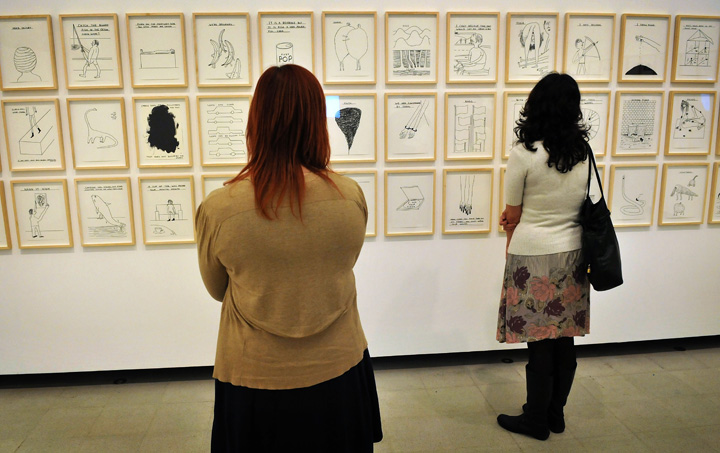TORONTO – She couldn’t remember the names of animals or certain words and shapes, but when Mary Hecht had a pencil in hand, she could draw a free-hand sketch of figures she vividly recalled from memory.

The internationally renowned sculptor is the prime example of an artist forgetting her abilities to take on simple day-to-day tasks because of her worsening dementia while still maintaining her skill to draw spontaneously and even from memory.
St. Michael’s Hospital researchers say their findings while studying Hecht shed light on how art and creativity preserves the brain.
“The takeaway in the case of Mary, as in the case of musicians, as in the case of other painters that we’ve been studying, is that artists or art in general is a protector of the brain function when the brain is affected by a disease like dementia,” lead author Dr. Luis Fornazzari said.
“The take home message is obviously that we need to emphasize more art in the learning process of children, adults and old age.”
Fornazzari is a neurology consultant at St. Michael’s Hospital’s Memory Clinic. His findings were published Thursday in the Canadian Journal of Neurological Sciences.

Get weekly health news
Read more: Brain exercise trumps medication in maintaining seniors’ cognitive health: study
Hecht was diagnosed with vascular dementia, the second most common dementia in the Western world, next to Alzheimer’s Disease. It’s the product of many strokes in different parts of the brain.
During the study with the scientists, Hecht put her memory to the test with a string of drawing tasks.
“She couldn’t do a cube, she couldn’t do a clock drawing test, she missed all the numbers. She put the hands of the clock in the wrong position,” Fornazzari told Global News.
She couldn’t recall the names of the researchers, the nurses, names of animals, certain shapes or words.
But on that day of testing, Hecht heard on the radio that famed cellist Mstislav Rostropovich died – Hecht had met him decades earlier and was able to sketch his portrait from her memory.
She was also able to draw a free-hand sketch of a lying Buddha figurine she recalled from memory earlier on that day.
Read more: Alzheimer’s most costly malady in US topping cancer, heart disease: study
While drawing, she was even able to speak “eloquently” and without hesitation about art – one part of her memory that appeared to remain intact while the rest of her memories were stripped away.
“This is the most exceptional example of the degree of preservation of artistic skills we’ve seen in our clinic,” said Dr. Corrine Fischer, director of the memory clinic.
Hecht isn’t the only anomaly. Fornazzari had also chronicled his findings on a musician who could still play the piano and even learn new music while Alzheimer’s chipped away at his cognitive function.
In 2011, Fischer’s research had suggested that bilingual patients with Alzheimer’s had twice as much brain function as their unilingual counterparts.
“It’s remarkable how the artist in this case, and within all the artists, are able to keep their creativity, their talent, when the disease process is devastating the mind and the brains of these patients,” Fornazzari said.
Read more: Brain scan may detect brain disease in NFL players
He said he hopes to lead a larger study of artists with neurological illnesses to keep looking into the relationship between art and brain capacity.
In the meantime, the researchers say that educators need to emphasize the arts – it could be a long-lasting medication for the aging brain.
carmen.chai@globalnews.ca
Follow @Carmen_Chai





Comments